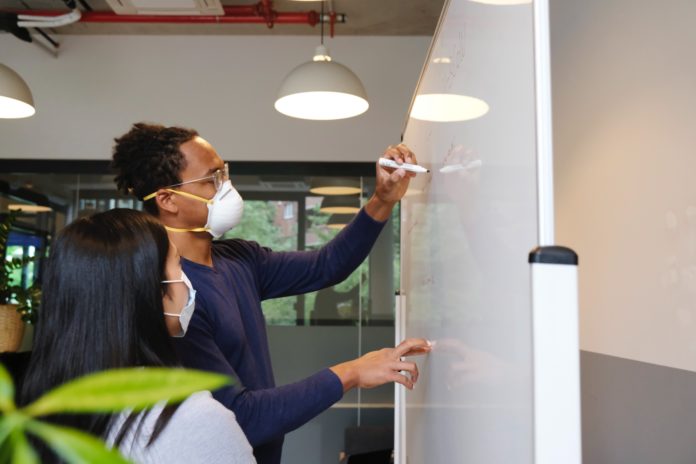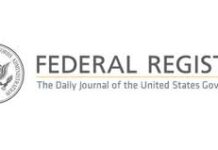Neither hope nor pessimism will help practice leaders define core goals and develop an effective road map forward. In today’s environment, perhaps the best pathway is to acknowledge the current ongoing Pandemic Emergency (PE) and the ensuing growing harm. The challenge for practice leaders is formable – How to do you manage delivering quality patient care with increasing financial pressures and scary turbulence? In this environment, strategically rethinking the practice operating infrastructure and applying tactical solutions is a good start. Farsighted leadership and experience are necessary now more than ever before.
The reality is the practice as we know it will not be the same after the PE. Yes, things are different and continue for some time. Yes, things will not be the same going forward. We have moved past hanging on waiting for things to get better – We’re not there. The recovery, for many, has stalled and the future can appear uncertain. The ongoing PE has transformed how we operate the practice, deliver care and services, travel, communicate, and manage simple human interactions. Translation – There is no clear one size panacea for success in today’s fast-moving maelstrom. In times of extreme stress, experience, and proven leadership are needed. A good sense of humor is always helpful!
Realigning the practice for profitability mandates a system-wide infrastructure evaluation and retooling. Concerns related to virus-related interruptions as well as increasing disruptions will likely continue. Yes, these are thought-provoking uncertain times. What we’re facing has gotten worse than imagined and much worse than we could prepare for. This PE has gone on so long it’s hard to remember the way things were. The good news, and we can all use some good news, is you can successfully navigate the practice transformation to sustainable profits. Personally, I remain a committed optimist and believe you can succeed.
That said, step one begins with a hard reality check, clear goals, and commitment to move forward. You can: Effectively retune the practice for profitability; deliver quality care; continue a community medical practice asset and survive the turbulence. To be fair, this is arguably the most stressful environment many have encountered. Simply, best to get started and stay on course.
How you lead and position the practice for tomorrow is critical. Successful organizations can do this, and do it at scale, by aligning the workforce team with practice resources. Culture, skilled leadership, and business acumen are essential components. For the practice, the reality of having to navigate the PE lies ahead. Some practices will regress to old ways of managing the practice. Others will very deliberately adjust and transform their practice with a viable position. Doing nothing and waiting for things to get better is not an option. Many will move accordingly to remain a profitable practice. Some will succeed, some may not. Best to begin with clear thinking about where you are, where you need to go and get to it.
Assumptions Many are reopening the practice to support delayed patient care and demand. Some are dealing with a second Pandemic wave of infections. Yes, new challenges but also opportunities. Innovation and successful adaptation are hallmarks of winning teams.
Foundational Steps
- Developing and implementing a realistic practice restructuring plan that understands the new environment aligned with strategic goals and tactical objectives.
- Increasing patient access and cash flow aligned with the stability of the practice.
Key Points
- Unifying leaders and a fully integrated practice team.
- A sound, flexible, turnaround plan.
- Optimum operational effectiveness, safe patient access models, clear goals consistent communication.
- Accurate billing and coding and effective collections are core goals.
- Significant retooling practice operations and repairing the financial damage of lost revenue.
- Developing new patient support requirements and care-centric communication.
- How will you effectively restructure to meet demand and financially viable?
- Can you manage with existing infrastructure? Current staffing? What if this continues?
- Available physicians and APPs? More or fewer? Scheduling?
- Is the community hospital(s) open and supporting patient procedures?
- What if privately insured patients lose their jobs and move to Medicaid which may not cover the cost of care delivery?
Below is a recent situation we were involved with that captures the current environment along with some key take away points.
Caveats
- Each group situation is different and one size solution will not fit all problems.
- Generally, core problems are driven by multiple forces and people.
- Required best solutions may cause unprogrammed offsets
- Team-based risk analysis will showcase multiple pieces necessary to resolve ongoing problems.
Situation. PRS Consulting was engaged to assist with evaluating and retuning the practice revenue cycle management (RCM) process. The practice comprised five physicians and 2APPs, in a good location with significant market share. One new physician had just come on board. Partnering with the practice, we evaluated the RCM system-wide processes, policies, and protocols. With the RCM evaluation as a base, we developed a Road Map targeting strategic and tactical improvements including time-sensitive get-well actions. To be fair, this project began just at the start of the evolving PE. In line with the changing environment and practice support needs, we moved to expand consulting partnering efforts. The practice moved quickly to add TH/TM services to offset reduced in-office visits. Practice leadership embraced needed performance improvements. This situation was successful by partnering with the practice team and leading the integration of the business/clinical teams to an effective Practice Team. The old adage remains and accurate time-tested maxim – Move forward and do what is needed.
Initial improvements targeted
- Clear goals and clear communication. Begin with, “Where we are and Where’s the practice headed”
- A/R recovery actions.
- Quickly stopping poor business practices.
- Improving patient encounters and implementing safety protocols.
- Staff education/training for effective pre-service processes and effective patient collections.
- Provider education for accurate billing, coding, and supporting documentation requirements including new TH/TM services.
- Active, hands-on management.
- Analytics and key practice metrics and ongoing business meetings with clear agendas.
Summary Today’s medical practice is facing both recovery and strategic change. Grants and low-interest loans help but retuning the practice for tomorrow’s environment requires focused leadership and system-wide restructuring. What if more “bad news” continues? Yes, planning is essential but, we tend to plan for what we know not necessarily what we will face. Yes, the PE’s ongoing financial impact is a game-changer. Yes, we are in uncharted territory. Yes, experienced leadership and adroit business acumen aligned with realistic goals are necessary. Adapting to the new environment requires critical thinking and solution-based planning. Analytics and trends aligned with key performance metrics are essential to maintaining momentum. The PE shock will likely be a problem for some time and many are stressed. Take time to listen and hear what’s important. The practice team and patients all want safe care and quality services. Make risk calculations that make sense and begin transitioning the practice forward. A better tomorrow begins today.
Key Points
- Accepting what’s important, not what we want is indispensable.
- Urological patient care and services will continue in demand.
- Skilled practice leadership, clear goals, and actions, clear communications are required.
- Mitigating the financial impact of declining net income and stabilizing group cohesiveness.
- Define patient access models, provider scheduling, staffing levels, and support services.
- Building better relationships with patients and community hospital(s) for a stronger bottom line.
Conclusion.
The ongoing chaos and growing impact of the PE are significant. Declining patient access and revenues (decimated balance sheets and P&Ls), reduced patient office visits and hospital surgery access, staffing issues, difficult patient collections, and management system-wide change. Perhaps, an old dictum may help:
There are many things worth doing and many risks are worth taking. Most are not, and should be avoided.
Surviving the PE as a viable medical practice is job one. The financial impact and reality are alarming and what keeps practice leaders awake at night. To be fair, any of these issues are beyond basic management challenges.
The PRS Team understands the issues and ongoing healthcare turbulence and how to effectively work together as a team partner. PRS Consulting provides strategic advisory, operational planning, staff training, and effective communication tools to get you back on track.
Please click below to schedule a free confidential conference call with a PRS Consultant to review your situation and concerns.



